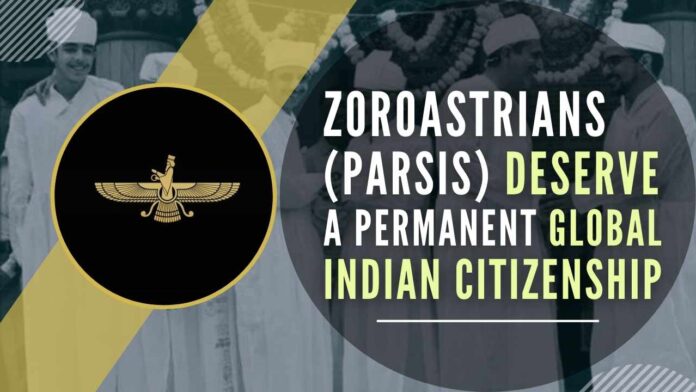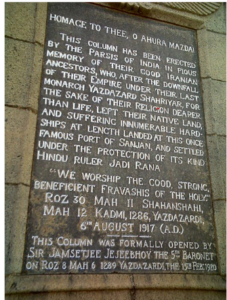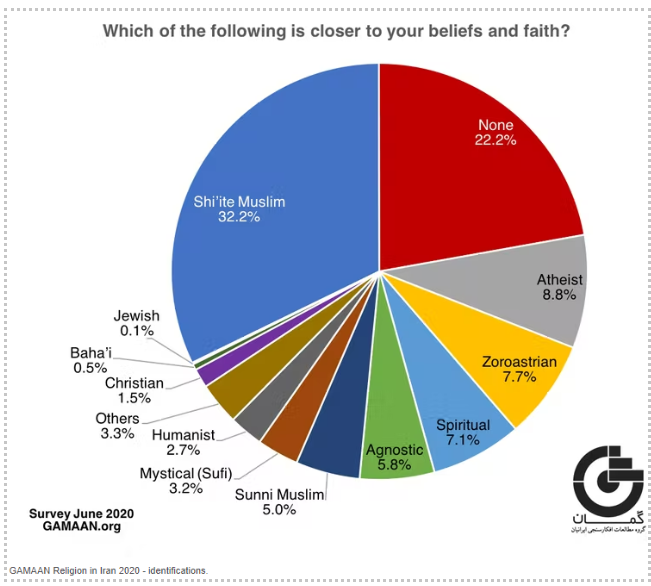
Why the Zoroastrians deserve a permanent global Indian citizenship?
The Parsis, also known as the Zoroastrians are the people who follow one of the oldest religions in the world which is Zoroastrianism. They worship the fire & consider it sacred. They are the world’s first organized monotheistic faith. Zoroastrianism is natively known as Mazdayasna. Parsi is an ethnic identity referring to the people who fled Persia (their native land) while Zoroastrianism is their faith.
Their origins trace back to Persia which is present-day Iran & a few parts of Iraq however, there are a few authors such as Srikanth Talgeri who argue that the Zoroastrians have an Indic origin. The modern-day Parsis are the proud descendants of the mighty Achaemenian empire which once stretched from Egypt to the modern-day Sindh province in Pakistan in the 6th and 7th centuries BCE.
The Kings of the Achaemenian empire are some of the finest examples in the world who have shown how to build an empire, how to rule it, what subjects need to be taken care of etc. The mighty empire had some of the finest Kings such as Cyrus the Great, Darius, and Xerxes, and their capitals such as Persepolis and Susa depict the magnificence that they were involved in their construction.
Unfortunately, their outlook on the enemies and a few blunders resulted in a catastrophe for their empire. Alexander’s invasion burnt down their capital city Persepolis in the 3rd century BCE and the Persian empire took a bad hit. After almost four centuries the Persians did revive the Achaemenian rule as a neo-Persian empire commonly called as Sassanian empire for almost 4 centuries from the 3rd century AD to the early 7th century AD.
The Sassanian empire did bring back the true identity of the Persians and kept the flame of the Zoroastrianism alive and it fought vigorous battles on all sides such as the Byzantine Christian empire, the Turks, the Nomads, and the Arabs.
Although it is popularly stated that the Sassanian rule collapsed due to the Arab Invasion, it was not the only cause. The great empire collapsed not just because of a barbaric Islamic invasion from the Arab peninsula but also because of a blunder by the last king Khosrow II. Khosrow married a Byzantine Christian named Maria. Kavad II (known as Sherow) was the son born to them, although the legal heir for Khosrow was Mardanshah (also known as Shahriyar, born to Khosrow & Shirin) and there were many preceding Kavad to the throne, Kavad overthrew his father Khosrow in a coup, executed him, his general, the entire male lineage of the royal family including his brothers. This stripped off all native leadership of the Sassanian empire and gave full advantage to the neighboring Byzantine Christian empire to recover from the losses incurred in the Byzantine-Sassanian wars.
After all these reckless rampages, Kavad allowed full religious freedom for Christians in the Sassanian empire (ideally to allow the Christianization of Iran) and thus leaving the country to a leadership crisis, confusion, and chaos between different provincial chiefs. Sensing the opportunity the Arabs started invading the Sassanian empire when a 7-year-old Yezdegard III (the last son of Shahriyar) was appointed to lead the empire by the noblemen.
The noblemen did try to defend the empire but unfortunately, it was too late and it was a one-sided battle in favor of the Arabs, even the last King Yezdegard III was killed in 651 AD. Legends and myths say that Yezdegard III had a daughter named Nik Bano who prayed to Ahura Mazda for help during the Islamic invasion and the mountains of Yazd opened the doors and she disappeared.
The post consequence of that invasion resulted in the crushing of both the Sassanians and their true identity which is Zoroastrianism in their motherland, Persia became an Islamic state where the remaining were given only two choices ‘Conversion to Islam or Death’. This sad event resulted in the exodus of the Zoroastrian population to Sanjan, west coast of Bharat, i.e. the modern the day Gujarat to avoid persecution. Every year November 17 is celebrated as Sanjan Day – the day Parsis landed in India. For over twelve centuries the Parsis have lived peacefully with the native Hindu society. Not a single member of the native population was converted to Zoroastrianism (a promise they kept to Jedi Rana, the then ruler of Sanjan) and they have completely assimilated with the native society.

Today the Zoroastrians are less than ten thousand (officially) in their motherland, Iran. Most of them are now in Fars and Yazd (named after the King Yezdegard), however, there is a silent bloom without any notice. The Iranians have started to introspect their identity after the rigorous imposition of Shariat on them, especially on their women.
The major problem with the Zoroastrians is that they have an identity crisis, they don’t have an exclusive country or a province that they can relate to, although they were asked to come back to Iran by the then President Shah Pahlavi in 1971 during the celebration of the 2500th coronation of Cyrus the Great, it was too late and the 1979 Islamic revolution lead by the Ayatollahs wrecked it.
Although the Zoroastrians are microscopic, the native Iranians (Muslims) are introspecting on why they are being ruled by Shariat while they are sure that their identity is not the same as that of the Arabs (which follow Shariat rule). Despite all the atrocities by the clerics via Shariat, even today the symbol which is used widely in Iran, the farvahar, has Zoroastrian roots
The main propellent for this introspection was the advent of the Internet, the internet rewired the Iranians to a certain extent and espoused the thought of their origins & cultural renaissance, and thus there are many who still secretly read, learn and practice their original culture which is Zoroastrianism but count themselves as Muslims.
Since the change of faith from Islam would mean death the Iranians are practicing and reading things in secret. In the neighboring Kurdistan province, almost 100000 people got re-converted back to Zoroastrianism during the ISIS group’s rise in Syria, this is an indication of what is about to rise in the coming days.
The other reason for this silent espousal is the Iranian diaspora, the Iranian diaspora which has settled in the US and Europe has played a major role in educating the natives. Their knowledge coupled with their entrepreneurial mind has created so many tech firms in Silicon Valley, this includes tech firm giants like Uber. Though the diaspora has assimilated with modernity their quest for identity has enabled them to understand that their origins are nowhere close to the Arabs or Islam and thus many have contributed to the actual history of Iran which traces back to the Zoroastrian culture.
It is just a matter of time before they completely renounce the Shariat and get back to their roots which is Zoroastrianism (at least in the US)
Apart from this, the native Iranians are also on a similar path, a recent survey in 2020 has shown that Iranians are moving away from Sharia and Islam. There is a slow but very silent undercurrent without the notice of the regime. The report shows that around 7% of the population consider themselves Zoroastrians. The survey can be found here.

Although the Zoroastrians are reviving in other countries on a strong note, the first country where they sought refuge and thrived for over twelve centuries, Bharat, they are now facing a serious challenge.
Today in Bharat, the Zoroastrians i.e. the Parsis are less than 60,000 in population. They constitute what is called a micro-minority but not a tribe. Over 60% of the population is aged over 60 years and they are dwindling.
The empire builders who came to Bharat in the 8th century, today, provide maximum skilled employment through their business units. The India-based multi-national companies such as the Tata Group, Shapoorji Paloonji, Wadia Group, Godrej, and Poonawala are the neo-empires founded and run by the Parsis.
In recent years, the Parsis have been migrating to other countries which is a huge concern unnoticed. Even one Parsi migrating out of India is a huge loss for our country.
The Parsis have an entrepreneurial mind and the Hindu society’s large young demographic dividend is in dire need of employment.
The coexistence of Hindus and Parsis is necessary to ensure that there is a continuity of mutually synergetic two-way beneficial business cycle, a natural symbiotic relationship. This is the fundamental reason why the loss of even one Parsi means a lot to this country.
The Parsis when they move abroad tend to take up the other country’s citizenship and when they do, it nullifies their Indian citizenship as dual citizenship is not allowed in India and this also means starting a business in India for them becomes a ‘Foreign’ investment while their forefathers like Jamshedji Tatas were the most prominent proponents of Swadeshi movement which laid the foundations for our freedom struggle.
In the larger interest of the country as well as their community, we first need to restore this interdependent symbiotic cycle of relationship between Parsis and the natives.
This can be done by taking 5 initiatives that will restore and welcome them back to the place where they flourished the maximum.
The first step would be granting all the Parsis a permanent global Indian citizenship and several other ease of living and entrepreneurial initiatives.
Secondly, The Parsis own properties in prime areas in Mumbai and several other cities and they are susceptible to poaching by the real estate mafias as they do not have the manpower to take care of it, so to protect their interests the Indian government should declare all the properties held by the Parsis as National Heritage Monuments (with Central Police forces as security). This is inclusive of all their Agiaries, Baugs, colonies, and even independent houses.
All their culturally significant places have to be declared as well, this includes the 4 villages along the coast of Gujarat, i.e. Navsari, Udvada, Sanjan, and Behrot.
Third, the government should bar all the transference of properties between Parsis and non-Parsis.
Fourth, barring all the interfaith marriages between Parsis and non-Parsis for 25 years (with a few exceptions) and ensuring that the Parsis get married young and granting incentives such as interest free-loans (for their children’s education) if they have a large family.
The Parsis have contributed immensely to the freedom struggle but unfortunately, till today they have not been properly represented in the Parliament. To honor & recognize their work, their selfless contributions, and their peaceful co-existence, the government should amend Article 331 of the Indian Constitution and allocate (permanently) two seats in the house of the people to the Parsi Community (Previously these two were allocated to the Anglo-Indian community).
Lastly, a call for the return of the Zoroastrians should be made as a National Declaration by declaring their new year festival Novroze as National Holiday. Just like how Cyrus & his army restored Jerusalem to the Jews, Bharat as a nation should welcome them, and restore them to their glorious days.

Note:
1. Text in Blue points to additional data on the topic.
2. The views expressed here are those of the author and do not necessarily represent or reflect the views of PGurus.
PGurus is now on Telegram. Click here to join our channel and stay updated with all the latest news and views
For all the latest updates, download PGurus App.
- Bharat must bring back the world’s renowned empire builders – The Zoroastrians (Parsis) deserve a permanent global Indian citizenship & permanent representation in the Lok Sabha - June 23, 2022
- Hindu State Part 3: The Hindu State is possible with the synergy of 4 wings of Hindutva – Street Hindutva, Intellectual Hindutva, Tech Hindutva, and Virat Hindutva on stand-by - May 1, 2022
- The Hindu Vivaaha: A prosperity enhancing ceremony under siege, why educated Hindu youth should understand the financial & economic advantage of getting married young - February 18, 2022








Great institution builders. Young Indians should study them instead of indulging in history debates and social media conflicts
Parsis definitely deserve that kind of recognition. Kudos to the author for the proposal and hope this catches the eyes and ears of the decision makers.